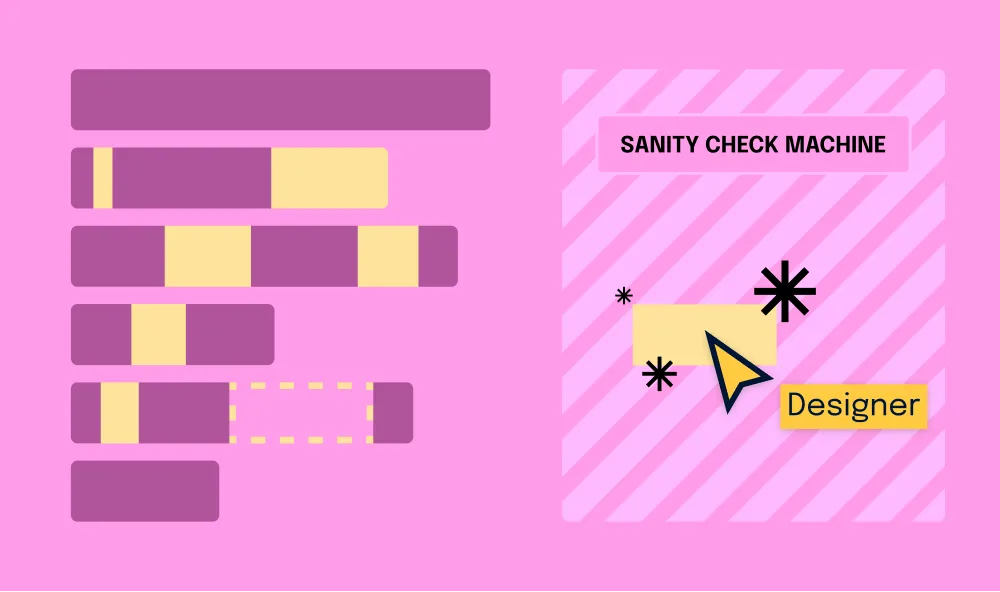In my work as a web psychologist, I’m exposed to many different types of user behavior and online decision-making processes. Although each person is different and has an individual style, I have identified six recurring patterns of behavior that I identify as specific “online personality types.” In this piece, I’ll discuss the six pattern types, explain the psychological drivers of their behavior, and provide site optimization tips that online businesses can use to leverage each type’s unique desires.
1. The Wish Lister
First up is the “There are so many things I want but know I can’t have” disorder. I’ve seen this pattern mostly in women and mostly on e-commerce websites. The visitor devotes lots of time and effort into carefully picking items she wants and putting them in her shopping cart. But the thing is, she is never buys them.
What causes this behavior?
Unlike a “real-life” shopping cart, an online cart promotes feelings of ownership because the user can add and remove items at any time, and those items will remain in the cart even if the visitor leaves the site. She can open the cart any time she wishes and view her virtual property. By having all these desired items in her own personal cart, waiting for her each time she enters the website, she almost feels like she owns them. And this serves as consolation for the fact that she can’t afford to purchase them.
How can you influence the purchasing decision?
One way of encouraging the Wish Lister to complete a purchase is to discount one or two of the items in her cart between visits, and then greet her return with a pop-up window announcing, “It’s your lucky day! Your selected item is on sale.” This kind of unexpected personal discount helps to enforce the wishful thinking bias—the notion that what we want to be true affects what we believe to be true. It gives the customer the sense that “the Universe is giving me a sign that I should buy this product.”
2. The Brand-Oriented Visitor
This is the visitor who cares about nothing but staying up to date with the latest trends that everyone is talking about. His purchasing decision is based solely on the fact that a product is reputed as a top brand, and his focus of attention goes straight to the emotional characteristics of the product such as colors, accessories, and attractive images. His online interaction centers on playing with the product, switching its colors, and examining different accessories that can be added to it.
What causes this behavior?
The Brand-Oriented Visitor is what we call an impulse buyer. The trigger for his purchase is emotional arousal, which is why he tries out different colors and accessories to imagine how it would feel to own the product. Rational parameters like price, practicality, and ease of use are given less weight in his purchasing decision. He replaces the logical sequence of consumer activity with an irrational moment of self-gratification, purchasing items that are neither functional nor necessary.
How can you influence the purchasing decision?
Successful product pages are those that know how to communicate with the customer’s emotional system and keep it in a state of arousal. In order to promote the impulse buy, product information should be hidden behind tabs (and thus available only “on demand,” rather than proactively imposed on visitors). Additionally, the website should exploit the emotional system’s propensity to react to subtle cues, utilizing stimuli like colorful and captivating images to trigger emotional arousal. This allows the Brand-Oriented Visitor to simply buy your product because of how it makes him feel, rather than reading through overly detailed information that may cause him to second-guess the purchase.
3. The Rational Visitor
On the other side of the coin is the Rational Visitor, whose two-step purchasing decision process involves (a) rejecting the options that do not meet her most important criterion—usually price—and (b) using cost/benefit analysis to select from the remaining alternatives.
What causes this behavior?
Rational Visitors feel they must rely on objective observation and factual analysis in their decision-making process. They seek a logical argument as a basis for action. For example, they wouldn’t replace their well-functioning car just because “it’s about time that we replace our car, we’ve had it for 5 years already.” They require a solid argument in order to pursue a course of action. Subjective thoughts and emotion have no place in their decision-making process.
How can you influence the purchasing decision?
Your website must support the Rational Visitor’s decision making process by providing all the information she needs to make a calculated decision. A telecom site for example could provide extremely detailed information about the comparative features of different cell phones (screen size, resolution, weight, etc.) so the customer feels that she is making the most informed decision possible.
4. The Maximizer
This customer is obsessed with making the absolute best choice out of all available options. He reads through every single product listing from the top of the page to the bottom, and only then feels comfortable enough to make his selection. Regardless of whether it’s a $50,000 car or a $5 used CD, the maximizer can’t make up his mind until he has viewed every option.
What causes this behavior?
The Maximizer is excessively worried about making a bad purchasing decision. Much of the time, in fact, he becomes so paralyzed with anxiety that he doesn’t buy anything—and even when he does, he generally feels somewhat frustrated with his decision. Keep in mind that this decision doesn’t even have to be based on utility maximization; it can be based on appearance, safety features, or any other criterion.
How can you influence the purchasing decision?
Observations of visitor behavior on multiple e-commerce websites have shown that, when faced with a large number of options, maximizers inevitably become frustrated and leave the website without making a purchase. Thus, businesses must intelligently limit the number of options that are presented to Maximizers, using such methods as filtering, limiting each row to five items, and providing a default or “suggested” purchase.
Businesses must intelligently limit the number of options that are presented to maximizers
5. The Satisfier
This is the opposite of the maximizer: a customer who chooses the first product that satisfies her minimum or immediate needs. We see these visitors start at the top of the page, begin scrolling down and immediately stop and purchase when they find their match, regardless of how many other options are available.
What causes this behavior?
To the Satisfier, time is money. She doesn’t want to waste hours looking for the best possible option when she could be doing something else with that time. So she takes action when her criteria are met. This doesn’t mean she’ll settle for mediocrity; her criteria may in fact be very high. But as soon as she finds an option that meets them, she is satisfied.
How can you influence the purchasing decision?
One efficient method for helping a Satisfier is filtering, which allows her to drill down to the options most relevant to her needs. This is the digital equivalent of an in-store customer service representative telling her, “Let me know what color and size you need, and I will bring it to you.” Retail sites might also arrange their listings by brand, purpose or mood (romantic, sexy or fun).
6. The Hesitator
The Hesitator fills out an online registration form or places desired items in a shopping cart, only to have second thoughts upon reaching the call-to-action (CTA) button. He then spends a significant amount of time clicking on different tabs and hovering over the CTA, as if he is waiting for the site to persuade him to click.
What causes this behavior?
The personality trait most likely to cause hesitation in online shopping behavior is risk avoidance. The Hesitator tries to avoid regrets over making the wrong decision, tends to be confused by an abundance of choices, and is indecisive about every aspect in his life.
How can you influence the purchasing decision?
The Hesitator needs all the reward he can get to carry on with the purchasing process. He must be completely convinced that he is making the right decision. This requires constant feedback and approval in response to every little step he takes. One way to do this is to use positive-oriented wording. For example, the subscription page might welcome him with “You’ve made a great decision choosing Forbes” or “You are one step from joining our high-level community,” rather than the neutral language used on most sites. Positive wording has a carryover effect, so the feeling the Hesitator gets from encouraging feedback puts the entire experience in an optimistic light, making him feel good about the purchasing process. Also, the website design should limit the opportunities for him to rethink his decision. This can be accomplished by reducing the number of checkout pages, or by removing the ability to return to the previous page once the process has begun.
Conclusion
The game has changed. Your next customer will research and evaluate your products through web sites and online networks long before your salespeople get involved. In fact, a call to your salesperson may be the last step in the buyer’s journey, significantly limiting the influence and expertise that has long driven the buying discussion. As the buying process moves online, salespeople are getting less face time with clients, and thus lack insight into which of their prospects are showing the strongest buying signals.
To succeed in this new digital climate, smart businesses are adapting and realizing the necessity of reading and responding to the “digital body language” of their prospects. This new body language is revealed through online activities such as browsing behavior, click-through rates, hesitation, scrolling and more. Tracking this behavior enables companies to quickly identify their buyers’ psychological needs and better assist them through the decision making process.
Illustration of different people courtesy Shutterstock.







